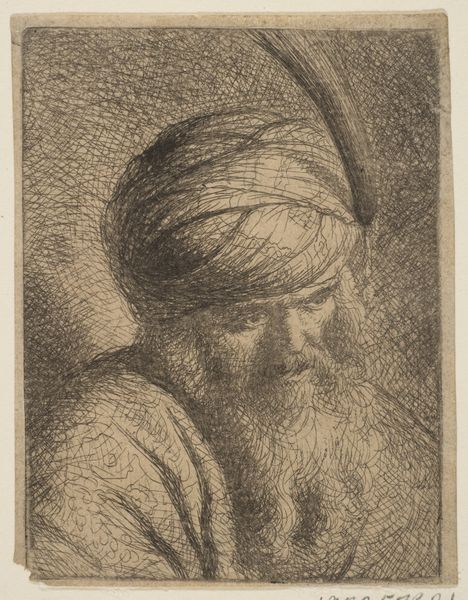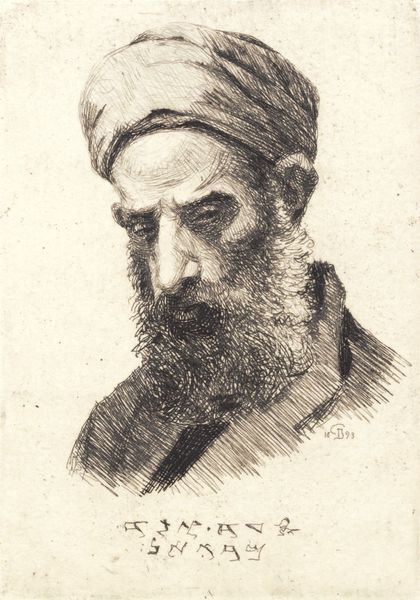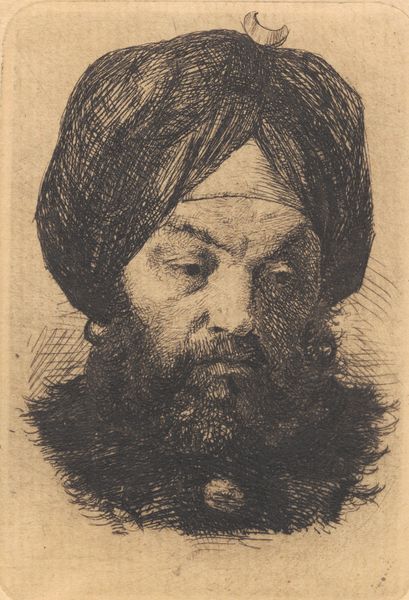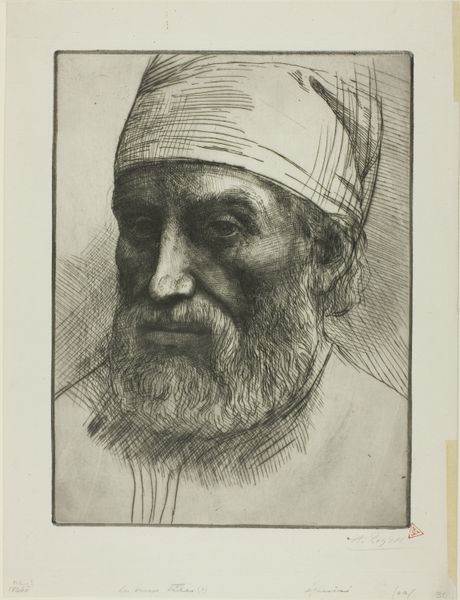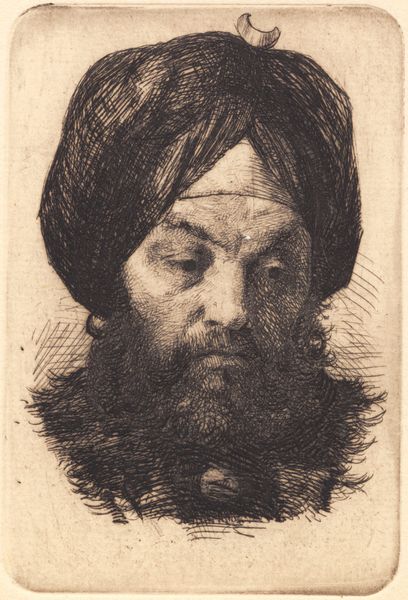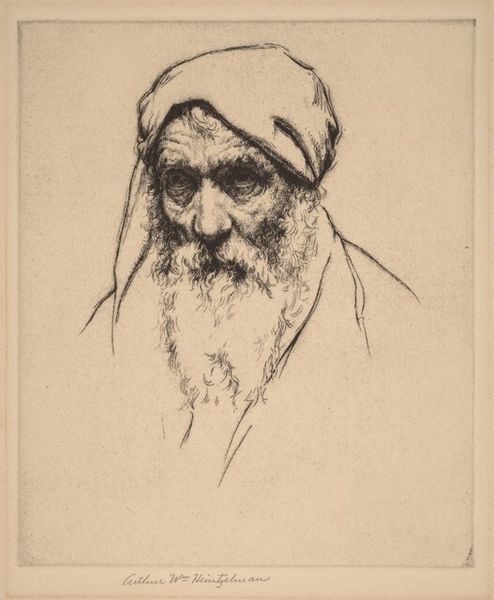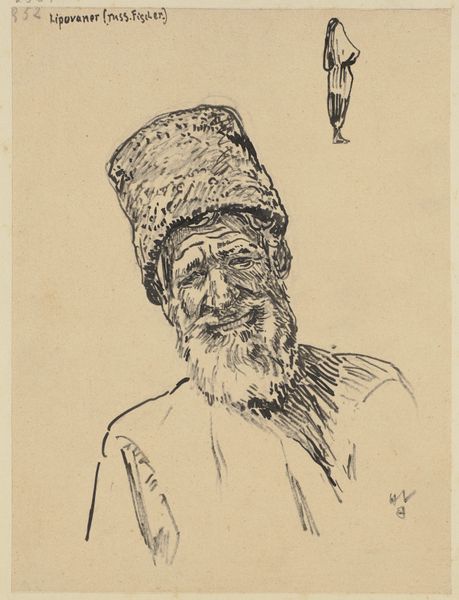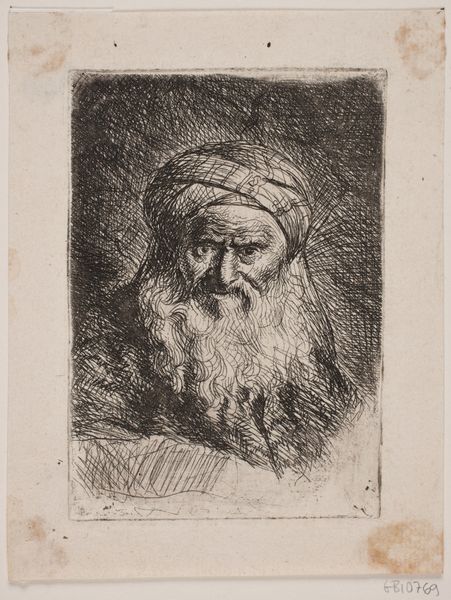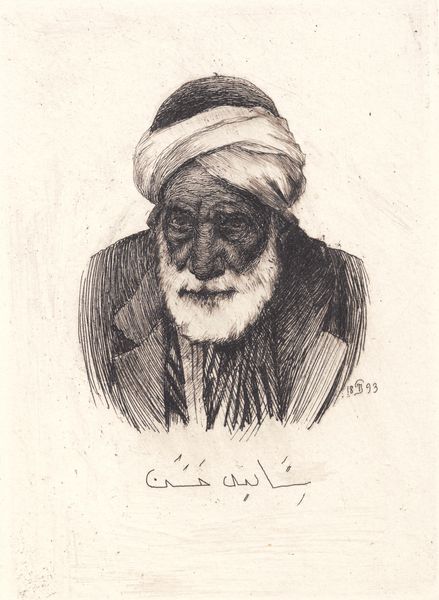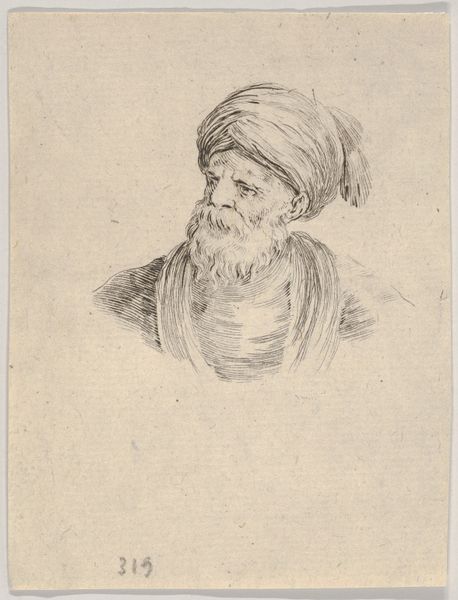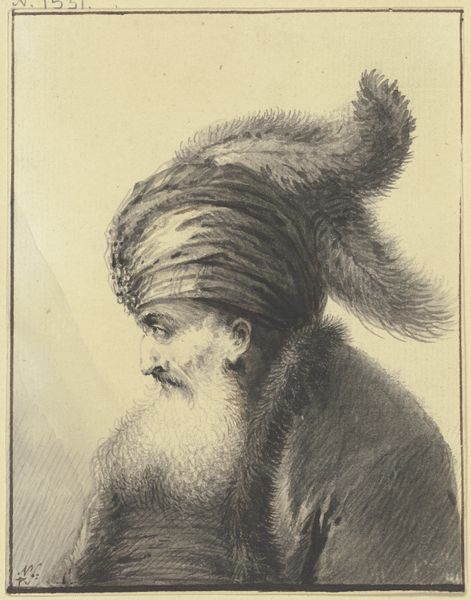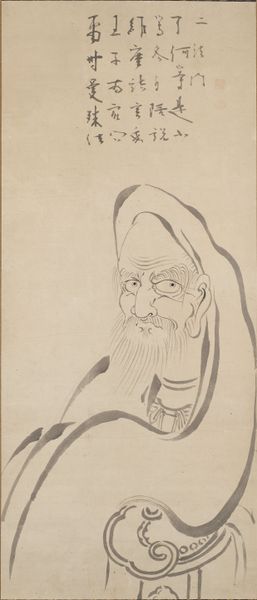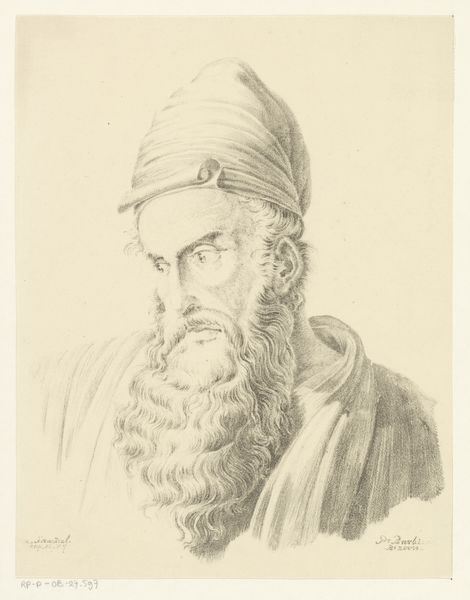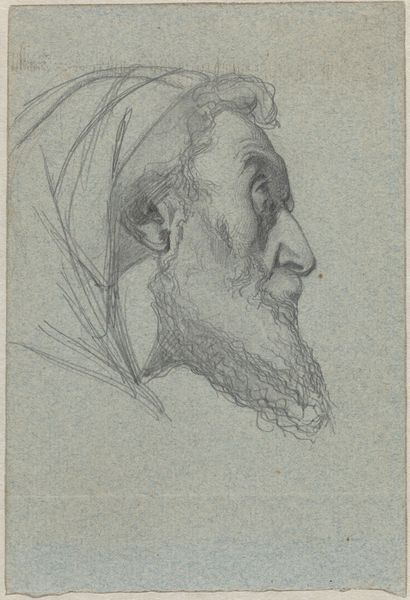
drawing, pencil, graphite
#
portrait
#
pencil drawn
#
drawing
#
face
#
pencil sketch
#
personal sketchbook
#
portrait reference
#
famous-people
#
pencil drawing
#
sketch
#
pencil
#
graphite
#
portrait drawing
#
history-painting
#
realism
Dimensions: 42 x 56 cm
Copyright: Copyright: Gazmend Freitag
Curator: Gazmend Freitag created this pencil drawing, "Gjergj Kastrioti - Skanderbeg," in 2013. Editor: It's striking. The hurried, almost frantic, lines lend an intensity to the subject's gaze, and the way the light catches his face gives him a noble presence. There's an undeniable sadness in his eyes. Curator: Skanderbeg, as he is commonly known, remains a pivotal figure in Albanian history, celebrated for his leadership against the Ottoman Empire in the 15th century. This work enters a long tradition of portraiture serving national identity. Editor: Absolutely. And Freitag has tapped into the archetypal imagery. The turban, the weathered face – they all contribute to a familiar iconography of resilience and resistance. The downward glance signifies not weakness, but perhaps introspection. Curator: Right, though what I find interesting here is the context of its creation. The sketch isn't from the 15th century but 2013, and the 'personal sketchbook' style suggests it isn't necessarily commissioned as official iconography but a personal reflection. The realist style anchors him firmly in history but perhaps complicates any nationalistic reading. Editor: Perhaps. But even personal reflections are steeped in collective memory. The very act of choosing Skanderbeg, of rendering him with such care, speaks volumes about cultural values and the need for heroic figures. There’s a psychological weight in revisiting such historical symbols. The artist channels something primal here. Curator: Yes, the act of repeatedly picturing historical figures inevitably turns them into something of a screen onto which the present projects its own anxieties and aspirations. Editor: It becomes an exercise in cultural continuity. He's saying that these qualities represented by Skanderbeg -- strength, defiance, perhaps even weariness -- are still relevant. We can read the sketch as both a portrait and an aspiration. Curator: I suppose, beyond history, there's the social reality. Memorials such as Freitag's serve to define our socio-cultural memory. How else might the public of today imagine Skanderbeg? Editor: It is powerful how the rapid lines give an air of constant motion. One might see this drawing as proof of our present re-engagement with cultural heritage through personal art. Curator: Indeed, an apt reminder of the ways history remains a lively, contested territory.
Comments
No comments
Be the first to comment and join the conversation on the ultimate creative platform.
